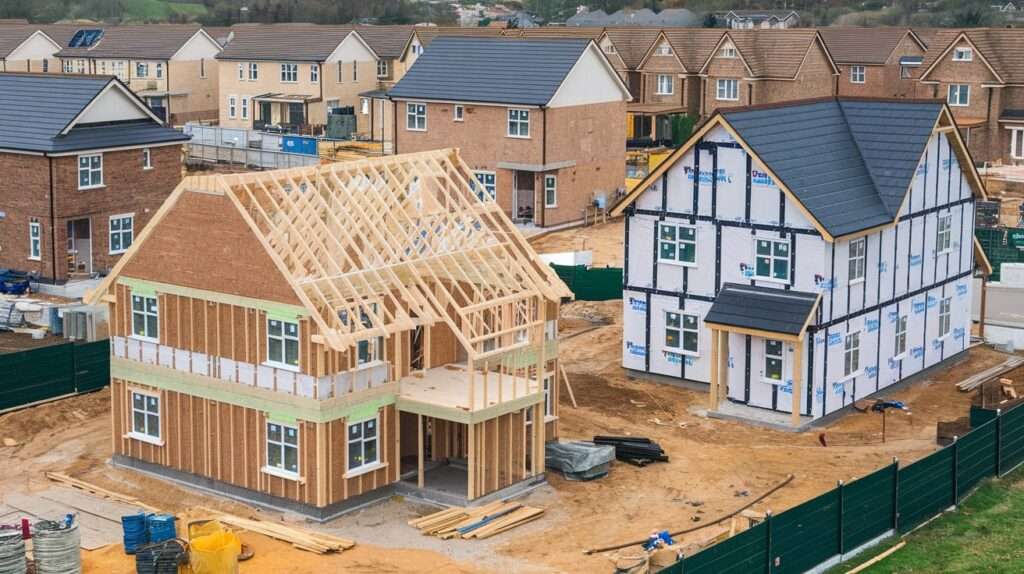Updated: 08/12/2025
Have you ever considered the variety of mortgage options available in the UK, and how they could suit your unique financial situation? Checking through the types of mortgages in the UK and then choosing the right one can feel overwhelming, but understanding the different types available can make the process smoother and less daunting.
Understanding Mortgages
A mortgage is essentially a loan taken out to buy property or land. Typically, you borrow money from a lender, and in return, they claim a legal right over your property until the loan is repaid. Mortgages in the UK come in various forms, each designed to meet different financial needs and circumstances.
Types of Mortgages
There are several types of mortgages to consider, each with its own features and benefits. Let’s break them down.
Fixed-Rate Mortgages
With a fixed-rate mortgage, the interest rate remains the same throughout the borrowing period. This type of mortgage is popular because it offers predictability in monthly payments, making budgeting easier. You typically lock in your rate for a period, usually between two to five years, though some options can extend to 10 years or more.
Advantages:
- Stability in payments
- Protection from interest rate increases
Disadvantages:
- If interest rates fall, you’re still paying the higher fixed rate
- Early repayment fees if you choose to pay off the mortgage early
Variable-Rate Mortgages
Variable-rate mortgages have interest rates that fluctuate based on the lender’s Standard Variable Rate (SVR) or a linked index, such as the Bank of England interest rates. These types of mortgages can be riskier than fixed-rate ones because your monthly payments can rise or fall.
Advantages:
- Potentially lower initial rates
- Possibility of lower payments if interest rates fall
Disadvantages:
- Payments can increase unexpectedly
- Difficult to budget effectively due to fluctuations

Tracker Mortgages
Tracker mortgages are a specific type of variable-rate mortgage that follows a set interest rate, usually the Bank of England’s base rate, plus a margin. For example, if the base rate is 0.5% and your tracker mortgage adds 1%, you’d pay a 1.5% interest rate.
Advantages:
- Often have lower initial rates compared to fixed mortgages
- Payments decrease when the base rate falls
Disadvantages:
- Increases when interest rates rise
- Less certainty in budgeting compared to fixed-rate mortgages
Offset Mortgages
An offset mortgage links your savings account to your mortgage. Instead of earning interest on your savings, the amount saved is offset against the mortgage balance, reducing the interest charged. For example, if you have a £100,000 mortgage and £20,000 in savings, you only pay interest on £80,000.
Advantages:
- Potentially lower interest payments
- Flexibility in accessing your savings
Disadvantages:
- Requires a significant amount saved to be beneficial
- You may not earn interest on your savings
Interest-Only Mortgages
Interest-only mortgages allow you to pay only the interest on the loan for a set period, usually the first few years. After that, you begin to pay back the principal amount. This type can be appealing due to lower initial monthly payments, but it requires a solid repayment plan.
Advantages:
- Lower initial payments
- Can be attractive for investors aiming for cash flow
Disadvantages:
- At the end of the term, the entire loan must be repaid
- Higher risk if the property’s value decreases
Repayment Mortgages
A repayment mortgage is where you pay a portion of both the principal and interest with each payment. By the end of the mortgage term, you will have fully repaid both. This is the most common type of mortgage and is often the safest option for borrowers.
Advantages:
- Guaranteed to pay off the mortgage by the end of the term
- Provides peace of mind knowing you’re reducing the loan balance
Disadvantages:
- Higher monthly payments compared to interest-only options
- Less financial flexibility in the short term
Additional Mortgage Types
Buy-to-Let Mortgages
If you’re considering investing in rental properties, a buy-to-let mortgage could be right for you. This type of mortgage is specifically designed for individuals looking to acquire property to rent out.
Advantages:
- Potentially higher returns through rental income
- Interest payments may be tax-deductible
Disadvantages:
- Greater risk due to market fluctuations
- Lenders may require a larger deposit than a residential mortgage
Help to Buy Mortgages
Help to Buy is a government scheme aimed at helping first-time buyers. With this scheme, the government helps you buy a new build home by providing an equity loan, making it more affordable to get on the property ladder.
Advantages:
- Lower deposit requirements
- Access to government-backed equity loans
Disadvantages:
- You will need to repay the equity loan eventually
- Usually only applicable to new builds, limiting your options
Shared ownership allows you to buy a share of a property and pay rent on the remainder. It’s designed to assist first-time buyers who may struggle to afford a home outright, making it an attractive option for many.
Advantages:
- Lower upfront costs compared to full ownership
- Flexibility to increase your share over time
Disadvantages:
- Rental payments on the remaining portion can add to monthly expenses
- You may be responsible for maintenance costs on the entire property
Reverse Mortgages
While less common in the UK than in some other countries, reverse mortgages are also available. These are primarily designed for older homeowners who want to convert part of their home equity into cash, usually for living expenses or home improvements.
Types of Reverse Mortgages
There are different variations of reverse mortgages that might suit your needs:
- Lifetime Mortgages: This is the most common type. You remain the owner of your home and the loan is repaid after your death or when you move into care.
- Home Reversion Schemes: In this case, you sell a part of your home to a provider in exchange for a lump sum or regular income, while retaining the right to live there.
Advantages of Reverse Mortgages:
- Provides cash flow without needing to sell your home
- Flexible repayment options concerning how and when you repay the loan
Disadvantages of Reverse Mortgages:
- Can significantly reduce the value of your estate
- Affected by the property’s market value at the time of sale
Comparing Mortgage Options
With so many options on the market, it’s essential to compare mortgages carefully. Consider these factors to help you find the best fit for your situation:
Interest Rates
This is a crucial factor in determining how much you will repay in total. Look for competitive rates and make sure to compare both fixed and variable rates.
Fees and Charges
Many lenders charge arrangement fees, valuation fees, and early repayment fees. It’s wise to add these into your calculations as they can significantly affect the overall cost of the mortgage.
Flexibility
Consider whether you want the option to make overpayments without penalties or whether you might need to switch to a different mortgage type later on. Flexibility can be a significant benefit.
Customer Service
Choosing a lender with good customer service can make your mortgage journey much easier. Research customer reviews and the lender’s reputation.
Finding the Best Mortgage for Your Needs
Finding the right mortgage is all about understanding what you can afford and what best suits your financial goals. Before making any decisions, consider speaking to a mortgage advisor who can provide tailored advice based on your situation.
First Steps to Securing a Mortgage
- Check Your Credit Score: Your credit score will affect the type and rate of mortgage available to you. Ensure there are no errors and work on improving it if necessary.
- Determine Your Budget: Calculate how much you can afford in monthly repayments while considering additional costs like maintenance, insurance, and property taxes.
- Research: Take time to familiarize yourself with different types of mortgages and seek out lenders that offer competitive rates.
- Get a Mortgage Agreement in Principle: This is a statement from a lender saying how much they would lend you, which can give you a good idea of your buying power.
- Consult Professionals: Whether a broker or a financial advisor, having expert guidance can help simplify the process and provide clarity.

Conclusion: Types Of Mortgages In The UK
Choosing the right mortgage in the UK can be pivotal in achieving your homeownership dreams or investment goals. With various options such as fixed-rate, variable-rate, and more specialized choices like offset and buy-to-let mortgages, understanding these types will empower you to make informed decisions.
Always consider your long-term financial goals and personal circumstances before committing to a mortgage. Take the time to research all your options, compare rates and fees, and seek advice when needed. The right mortgage can make a positive difference in your financial journey, helping you achieve your property aspirations with ease.

